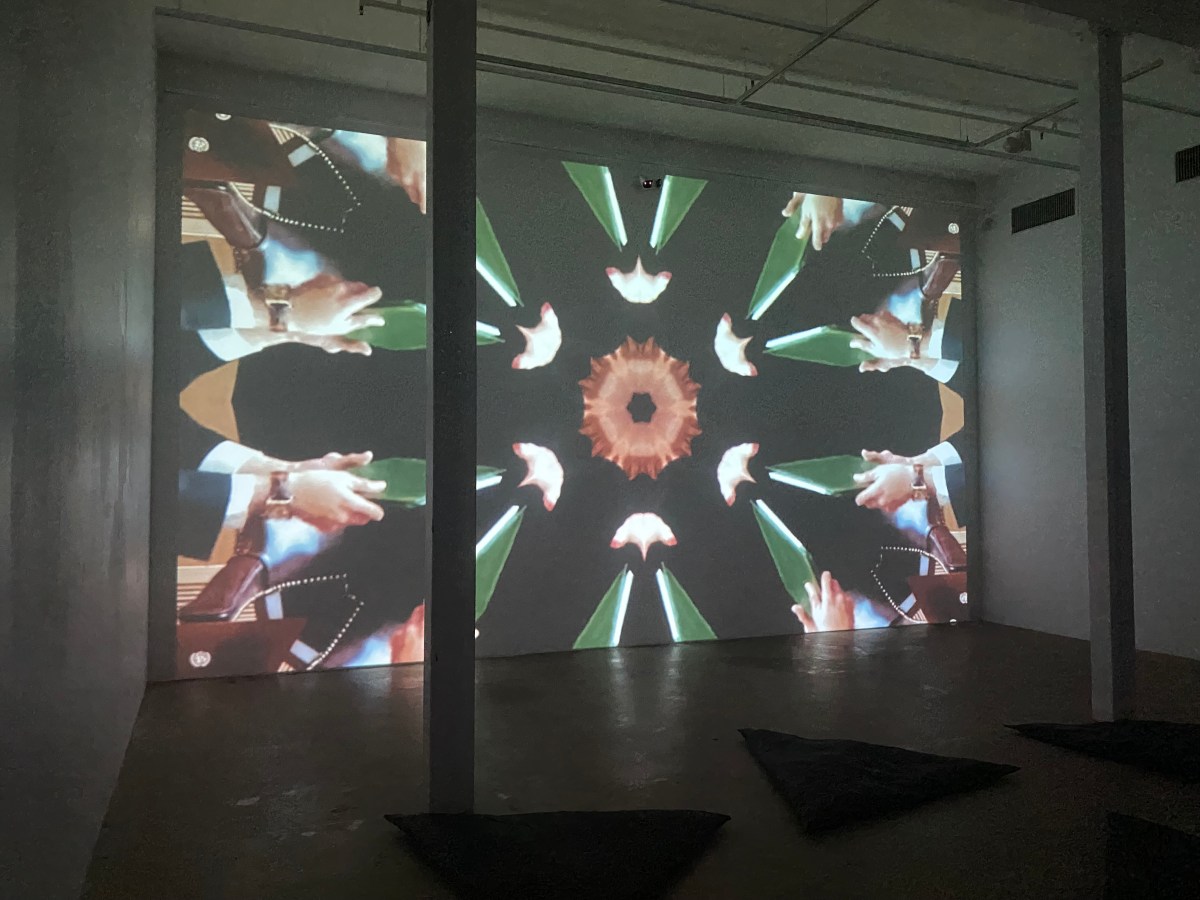Through her solo exhibition, Greater Sunrise at Outer Space, Rebecca Ross offers viewers a number of prospects, not the least of which is the promise a new day may bring for change. When it comes to geopolitics, however, particularly situated in a ‘postcolonial’ Australian context, references to the sun present a quandary.
Through our position in the Commonwealth, we remain remnants of an empire upon which the sun never sets. Ross has set her sights on reminding us of the imperialism the Australian government independently imposed by redrawing its maritime borders in 2002. This arrangement left the nascent nation of East Timor bereft of the oil field, from which this exhibition takes its title.
The solo presentation comprises a 20-minute-and-three-second, single-channel video, projected to an immersive scale. Visitors entering from the street front are required to navigate around a shade cloth curtain, which doesn’t cover the width of the space. In the imperfectly blackened room, viewers are provided a choice between round stools or triangle cushions fashioned from shade cloth and repurposed rags. The artist is affording the audience a measure of comfort, in the hope that its members may stay the course.
Common for this medium, viewing commences upon contact as opposed to the beginning of a film. To this end, Ross’ employment of video art is par excellence. The sequences are disarmingly seductive, irrespective of when you start watching. Despite viewers having to contend with both spillage of light and the pervading hum of traffic, there is something even more pervasive about this projection. The images, which the middle-aged in the audience may find innately familiar, are fractiously arranged, as though seen through a kaleidoscope.
A Scottish invention of the 19th century, the kaleidoscope is a device that typically engages mirrors to refract colourful fragments of glass at the end of a cylinder to create beauty. Ross has viewers staring down a barrel of clips depicting officiating politicians, maps from the Timor Sea and photographs of an ocean rig. The repetitious representations of suit-clad forearms reduce the actions of their owners to aesthetics. This serves to emphasise the emptiness of their political gesturing. The artwork could be considered a meditation on a dispute between nations, one which was only mediated by the Permanent Court of Arbitration in the Hague in 2018.
There are moments when the wall is filled with geometries of highly saturated hues, which are, on occasion, interrupted by milder, but iridescent tones. At times the forms bear resemblance to a sun and at others a pulsing division of cells at the bottom of a microscope. This sentiment of being contrasting yet all-encompassing is enhanced by the playing of a singing ring, a resonating sound that is both earthy and otherworldly. The timeless tones may be mistaken by some for low-pitched electronically-generated drones. When the visuals are at their most minimal, HAL, the artificial intelligence (AI) iconoclast from 2001: A Space Odyssey, comes to mind.
In an age of AI and algorithmic art, Ross’ meticulous isolating and sequencing may also be considered rustic. Perhaps the most attractive aspect of this fascinating critique of Australian foreign policy over the past two decades is its harkening back to the wartime aesthetics of a century earlier. Polarised reactions to the Great War may be found in the abstraction of De Stijl, the art movement that pursued harmony and redemption, and the deconstruction of Dada, which sought to dismantle the establishments that instigated the conflict. In this artwork, Ross has managed to amalgamate aspects of the two to great effect.
Despite some of the sequences being retina-burningly bright, the shadow Greater Sunrise casts on the integrity of Australia as a nation makes it compelling viewing.
Rebecca Ross’ Greater Sunrise, an odyssey into the Australian geopolitical landscape over the past two decades may be experienced at Outer Space, Brisbane, until 15 April 2023.





